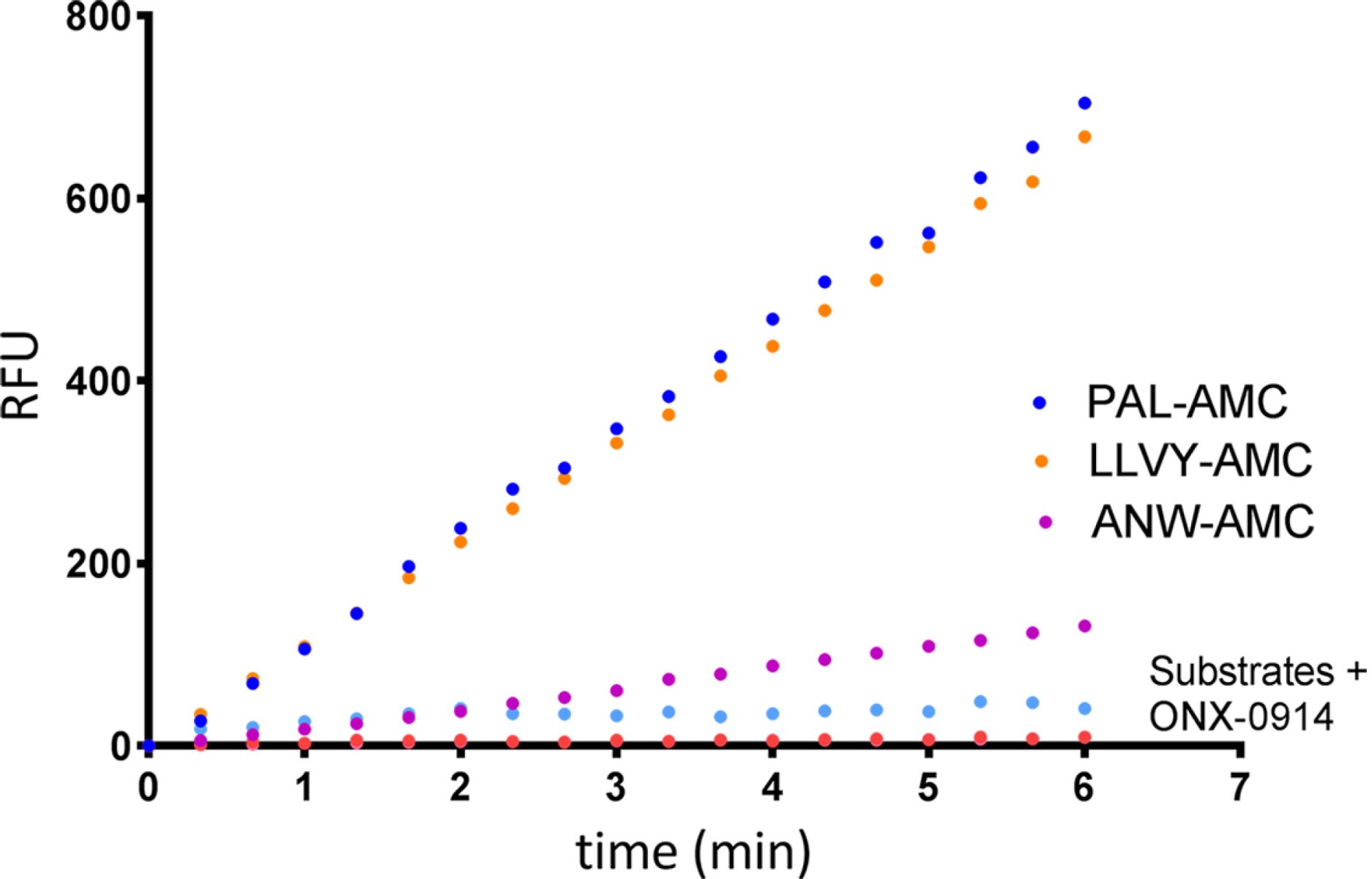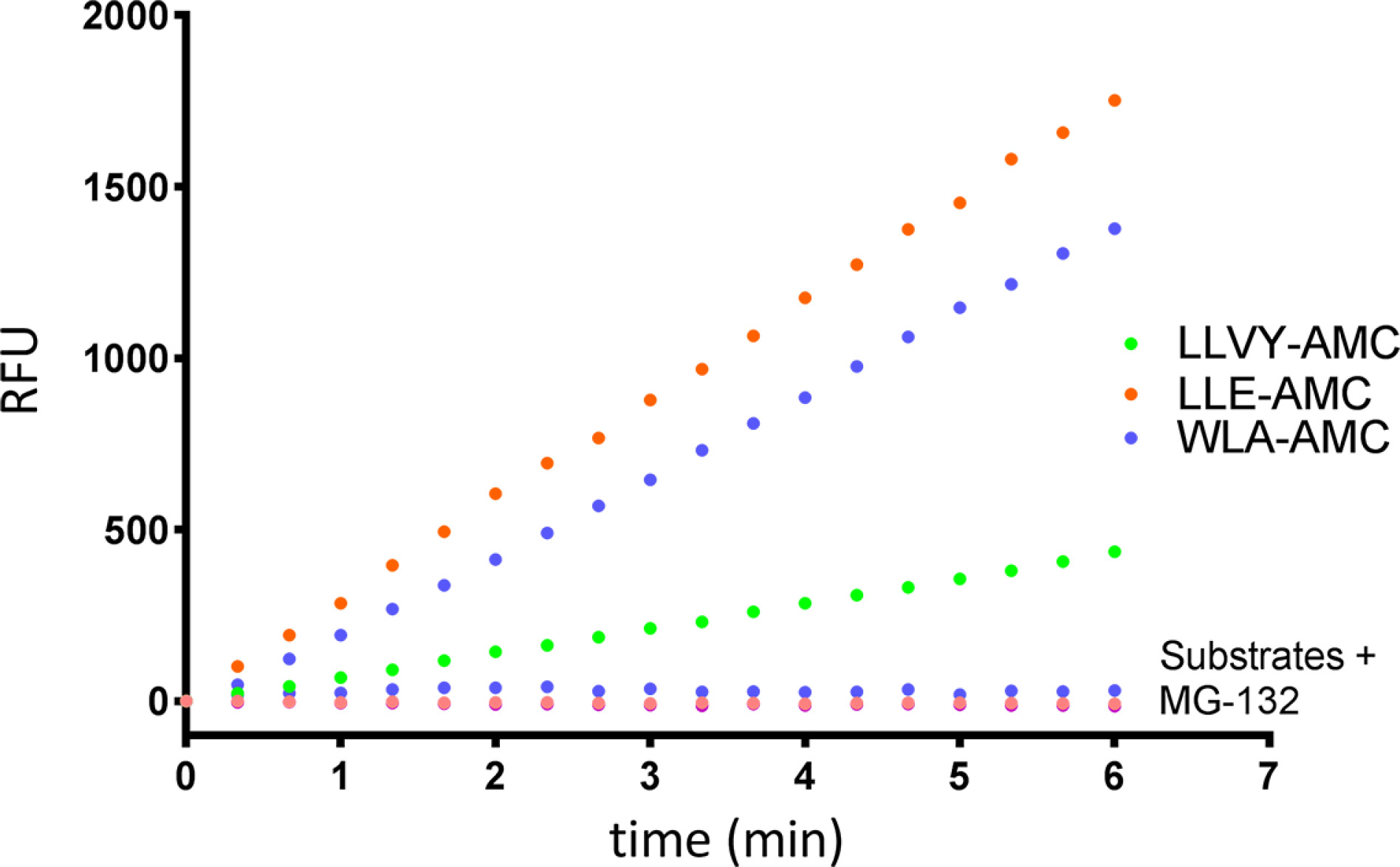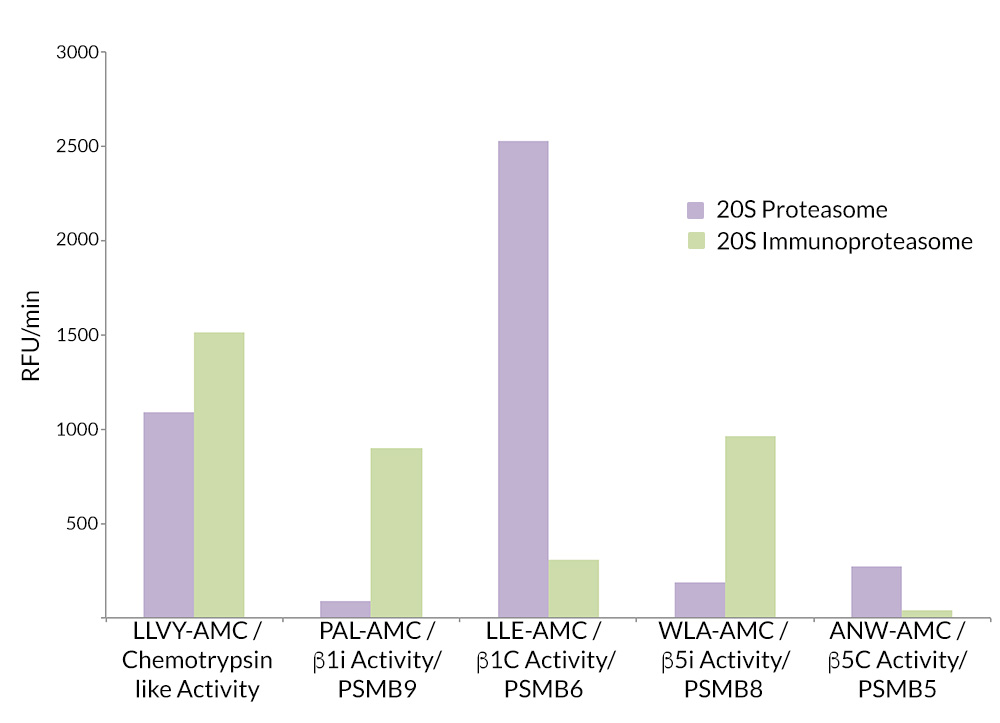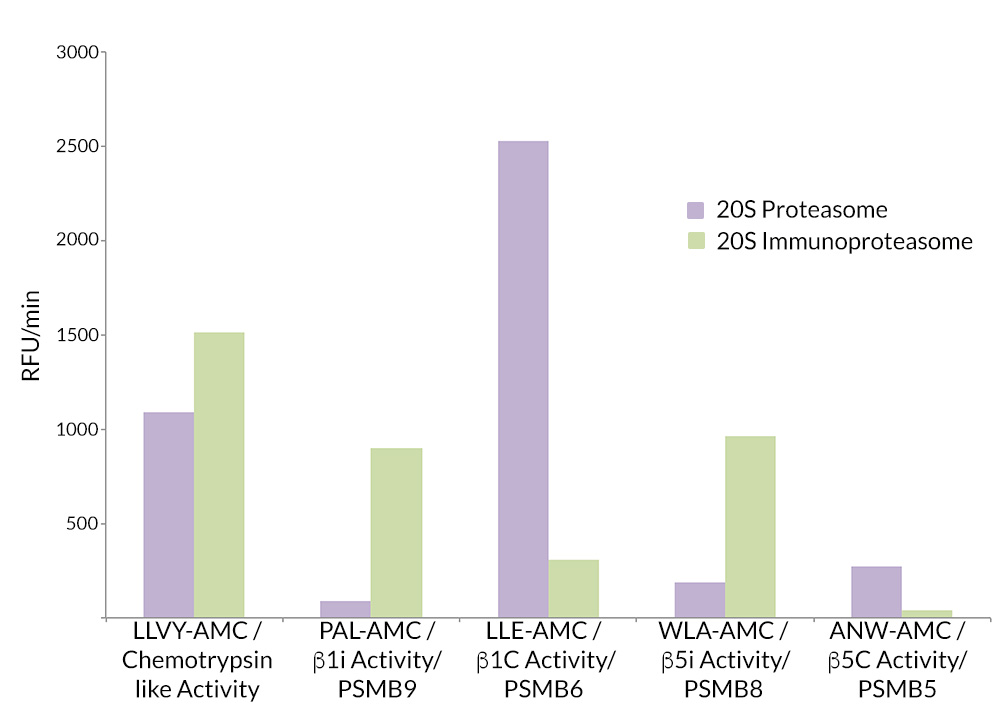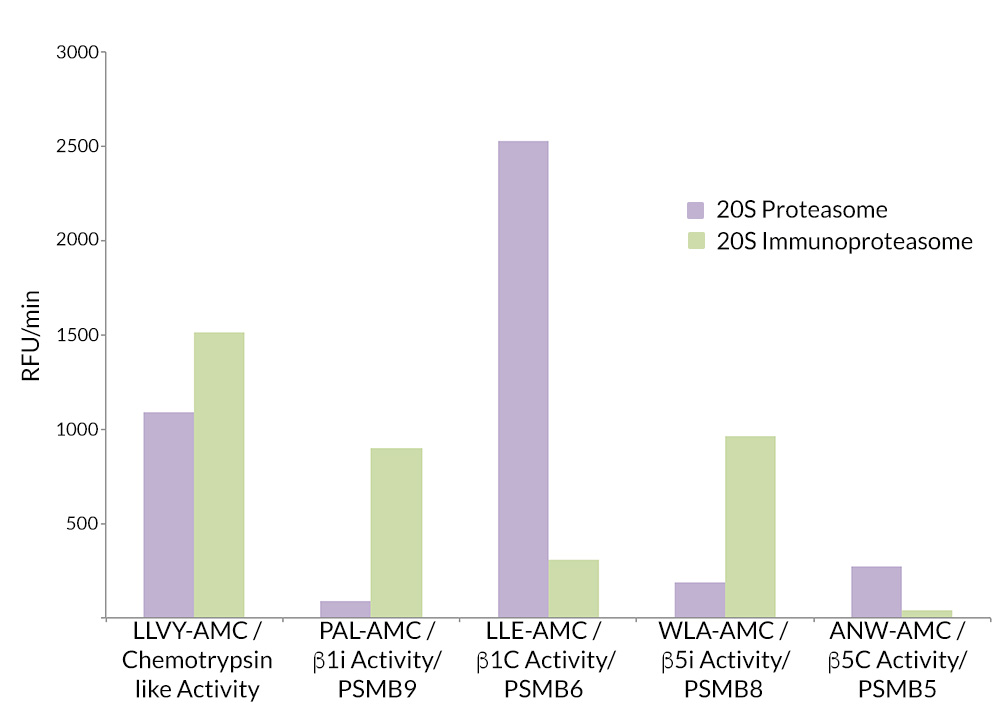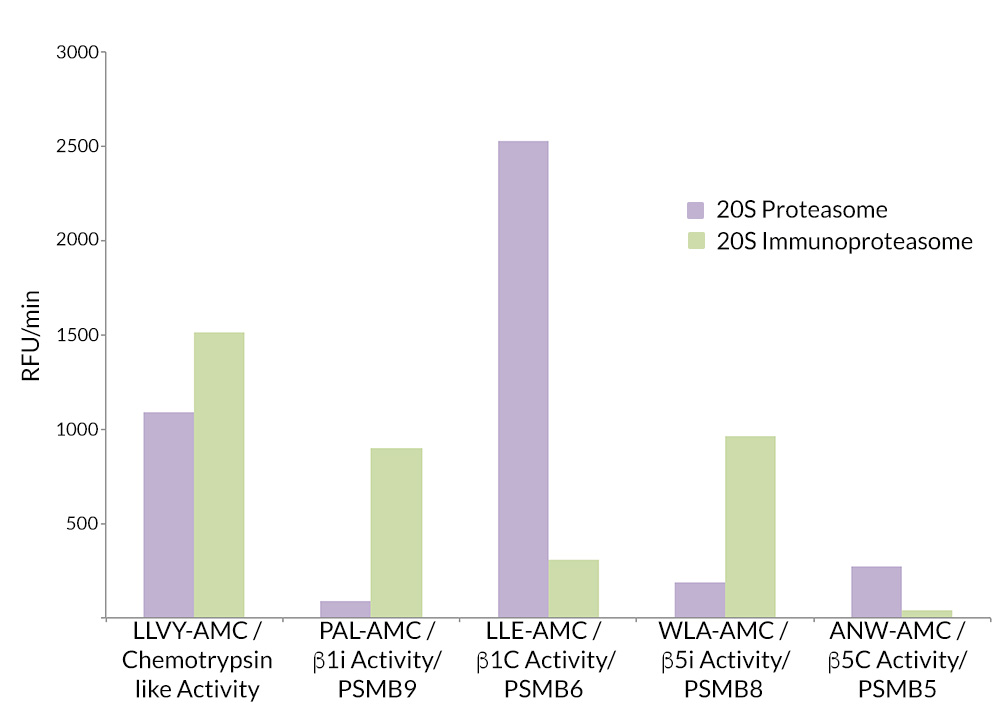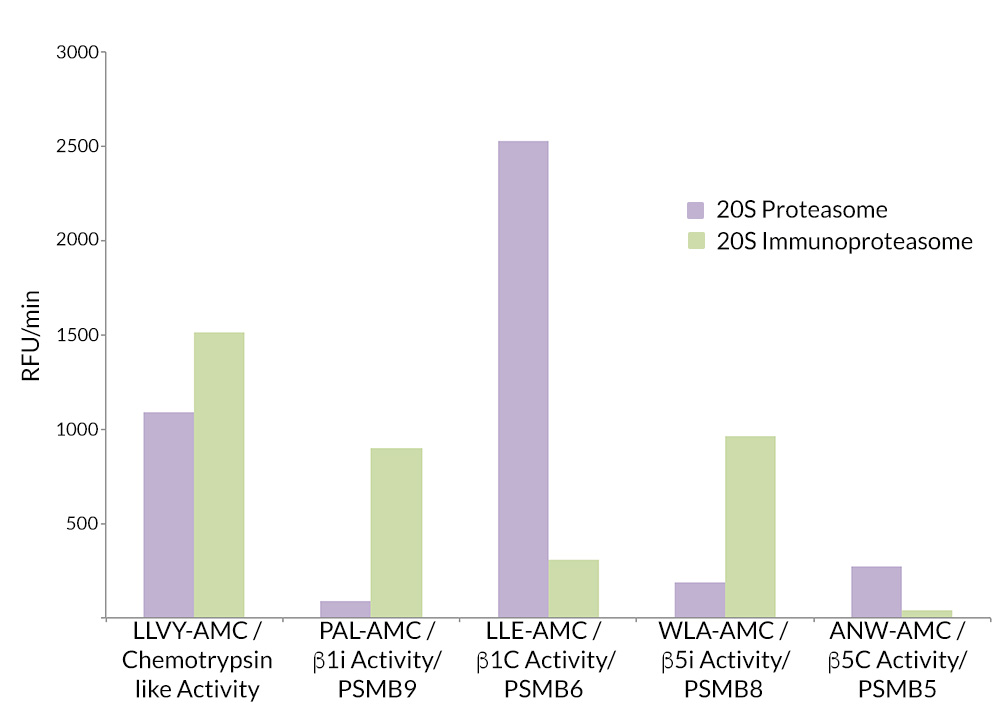
20S Immunoproteasome vs. 20S Constitutive Proteasome Activity: 20S immunoproteasome is most active against Suc-LLVY-AMC (SBB-PS0010), Ac-PAL-AMC (SBB-PS0007), and Ac-ANW-AMC (SBB-PS0009) substrates, representing physiologically relevant chymotrypsin-like, beta1i, and beta5i immunoproteasome activity respectively.
20S Immunoproteasome (human) (untagged)
SBB-PP0144
Product group Proteins / Signaling Molecules
Overview
- SupplierSouth Bay Bio
- Product Name20S Immunoproteasome (human) (untagged)
- Delivery Days Customer10
- CertificationResearch Use Only
- Estimated Purity>95%
- Scientific DescriptionRecombinant Protein. Human 20S Immunoproteasome. Source: Human Spleen. Liquid. In 50mM HEPES pH 7.5, 100mM sodium chloride, 1mM TCEP. The 20S immunoproteasome is structurally similar to constitutive 26S proteasome. The 20S core of immunoproteasome contains two outer rings composed of alpha-subunits, and two internal 7-subunit containing rings each possessing 3 specific subunits responsible for proteasome catalytic activity. In immunoproteasomes these subunits (beta1, beta2, beta5) are replaced by three inducible subunits: PSMB9, PSMB10 and PSMB8, (beta1i, beta2i, beta5i). These stress-induced subunits allow for the production of MHC-1 associating peptides, which are displayed as antigens on the cell surface. These displayed peptides can then be recognized by immune surveillance CD8 T cells. 20S immunoproteasome is recognized as a strong drug target for autoimmune disease and cancer. - The 20S immunoproteasome is structurally similar to constitutive 26S proteasome. The 20S core of immunoproteasome contains two outer rings composed of alpha-subunits, and two internal 7-subunit containing rings each possessing 3 specific subunits responsible for proteasome catalytic activity. In immunoproteasomes these subunits (beta1, beta2, beta5) are replaced by three inducible subunits: PSMB9, PSMB10 and PSMB8, (beta1i, beta2i, beta5i). These stress-induced subunits allow for the production of MHC-1 associating peptides, which are displayed as antigens on the cell surface. These displayed peptides can then be recognized by immune surveillance CD8 T cells. 20S immunoproteasome is recognized as a strong drug target for autoimmune disease and cancer.
- Storage Instruction-80°C
- UNSPSC12352202

